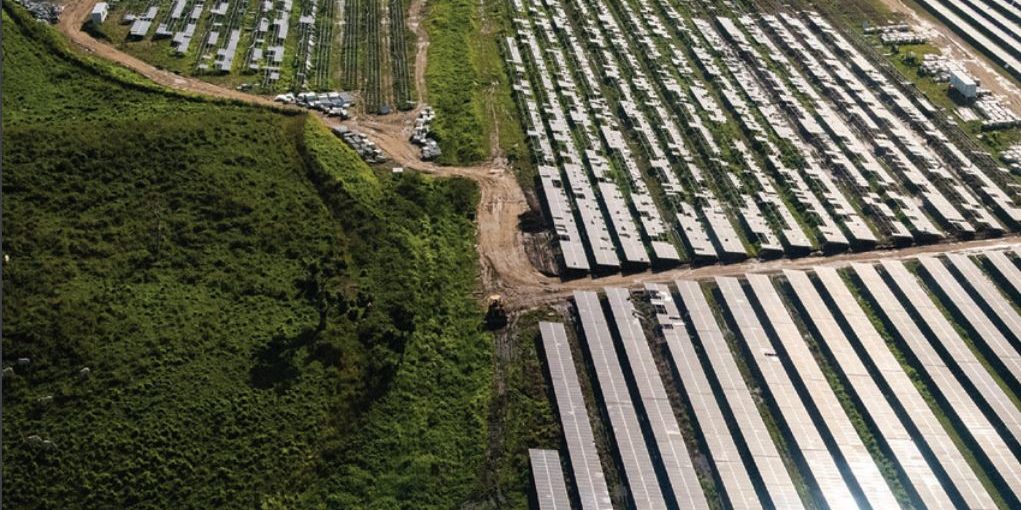When a hurricane hits, its much more like a never-ending herd of elephants than the freight train feeling that tornados are said to resemble. South Florida has implemented wind speed requirements for construction of anything from houses to solar installations in excess of 155 mph, up to 185 mph. That speed is fitting as the multiple storms that hit the state and region in 2017 did have sustained wind speeds over 180 miles per hour.
And it is this 2017 hurricane season that was the research body for the Rocky Mountain Institute‘s (RMI) Solar under storm: Select best practices for resilient ground-mount PV systems with hurricane exposure (PDF download).
The big takeaway is that a solar installation, with just a few refinements in design, procurement and installation, either will or will not survive the exact same storm.

RMI noted that there were some similarities between failed systems – including module clamp failures, undersized racks, undersized and under-torqued bolts, a lack of bolt locking solutions, and a lack of lateral racking support. The engineers also observed that surviving systems had the modules through-bolted (no clamps), and featured bolts with locking solutions and lateral racking supports.
A key point that should be noted is that none of these requirements for higher wind speed survivorship are expensive. But while they will modestly drive the cost of labor, and some racking requirements will add metal costs, these costs are pennies on the dollar in a region that is dependent on expensive electricity.
RMI estimates costs for a:
1 MW ground mount project on suitable soil and flat terrain in the Eastern Caribbean would incur an increase of approximately 5 percent in engineering, procurement, and construction (EPC) costs when these best practices are implemented versus the standard category IV rated installation.
RMI later estimates the cost of this to be about $90,000 for the project, and equal in price to the change of solar module pricing between 2017 and 2018.
Much of the document breaks down racking failures, but also gives some attention to solar panels as well the balance of system and its ability to handle heavy, sustained water from many directions. RMI also recommends minimum hardware specifications – and, just as importantly, refinements of installations techniques to counter extreme weather.

In addition to the hardware specifications and installation techniques, attention is also given to engineering requirements that would drive these installation techniques and the hardware procurements. Very specifically noted is designing the project in accordance with ASCE 7 requirements.
The end argument pushed by RMI is that it’s clear that there is a path toward hurricane resiliency with solar power construction. And the details matter, from the start of the project design through the implementation of actions down to torquing your bolts.
This content is protected by copyright and may not be reused. If you want to cooperate with us and would like to reuse some of our content, please contact: editors@pv-magazine.com.









11,000 Pa (vs. the standard 5400) modules aren’t mentioned, but they’re available if you ask around…
PanelClaw’s partners in Puerto Rico had ~20,000 modules deployed across flat roofs during Maria and Irma. < 1% damage was reported to racking and < 5% to panels. This included damage due to debris hitting racking and modules. Another ~18,000 modules were also deployed with our products on flat roofs in the affected hurricane paths last year…with even better results. Engineering matters!
Love to see a video implementing everything they are asking for in this article would help out a lot!